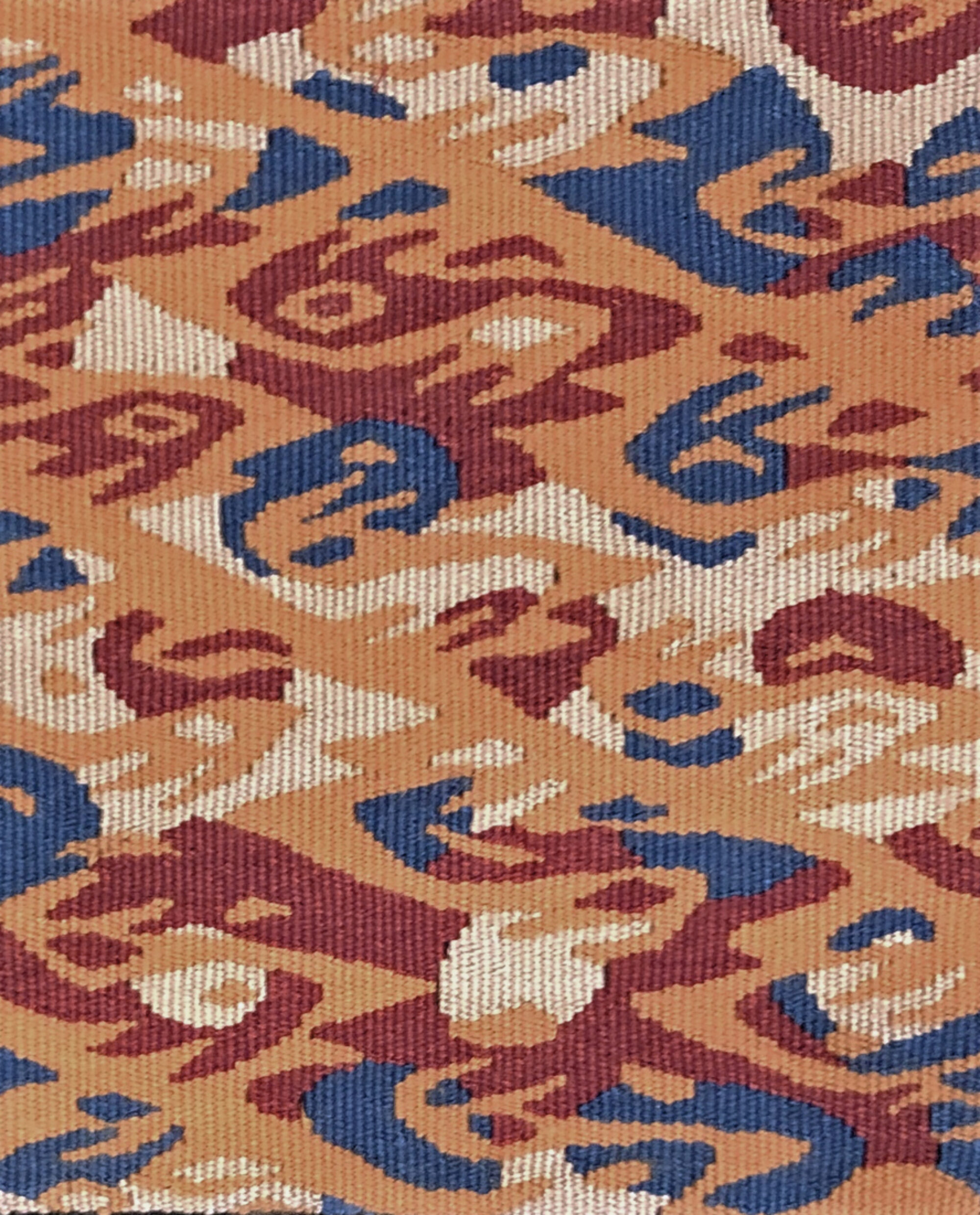This exhibition review was first published in the Spring 1999 issue of the Surface Design Journal.
Teach Yourself
Art Center Gallery, Seattle Pacific University, 1988
Layne Goldsmith’s one woman show at the Art Center Gallery of Seattle Pacific University offers a prolonged meditation on the nature of learning. As an Assistant Professor of Fibers at the University of Washington Goldsmith’s perspective is that of an insider. However, the title of her show, Teach Yourself , suggests the presence of an underlying tension between indirect, or second hand knowledge and direct hands on learning. The book as a symbol of the former and the hand as a symbol of the latter figure prominently in the works in Goldsmith’s exhibition, vacillating between cooperation and antagonism.
In The Simple Truth clipped book pages have been reassembled into a long vertical strip. Excerpted fragments cover topics as diverse as cats, Adolf Hitler, red haired people and whales, a listing reminiscent of Borge‘s Chinese encyclopedia.1 Because of the artist’s manipulation of the pages it is impossible to read the text in a traditional fashion. We are forced to abandon linear thinking which proceeds in a logical manner from start to finish and experience the text in a more self determined and intertextual manner. The abstracted presentation focuses our attention on the words themselves, the way in which they are combined and their possible meaning, rather than on the text as a carefully knit together whole. It does not spoon feed us neatly arranged information that fits into familiar categories, but demands that we become active agents in the creation of knowledge, supplying missing information and creating our own connections between disparate texts. The disjunction of the text allows for a multiplicity of readings.
The experience of information that Goldsmith offers in this work questions the existence of “simple truth”, of stable and fixed knowledge that one can finally and absolutely know. The Simple Truth reminds us that the knowledge we are offered in books, especially text books, is always and only a vast quantity of fragments bound together by the conventions of language and academic practice. The number of seamless truths that might be constructed from those fragments is unbounded.
In Your Hand painting, writing and applied cloth cover the pages of Your Handweaving, an instructional text for handweavers. Many of the modifications of the text involve images of hands, the fundamental tool of the artist. The images of hands masking written pages of weaving directions juxtapose the two modes of learning and remind us that reading an instruction manual rarely substitutes for hands on experience. On another page of the modified book Goldsmith has covered the lines of writing with thread, replacing arbitrary signifiers with the material which they signify. The reading of this page might be extended by pointing out that both language and textiles are constructions built on a series of units placed in particular patterns and governed by a particular set of conventions. However, the connection between language and textiles is probably more than just structural. Many of the textile and basket patterns formerly considered to be non referential are now interpreted as highly abstract modes of representation. Specific patterns of interlacement are combined to produce symbolic forms which refer to parts of the real world, just as elements of written language are combined to produce signs that substitute for reality. It is probably not fortuitous that textile terminology often serves as an analogy for information systems.
The reuse of existing materials such as the book pages that reoccur in many of the pieces in this show marks much of the artistic production of the late twentieth century. As Craig Owens pointed out, this borrowing from the past involves an allegorical impulse that not only recognizes the past or already formed, but also invests it with additional meaning.2 The use of an allegorical form underscores Goldsmith’s suggestion in The Simple Truth that comprehending a given phenomenon involves layers of meaning and is contingent upon the person receiving the information. From this point of view knowledge is provisional and constantly undergoing modification.
Goldsmith’s extensive manipulation and alteration of the book pages also reflects the importance of process for object makers, even in conceptual work. Process assumes a central role in Teach Yourself, a modified book in which torn and painted strips of paper are woven and mounted onto pages of Your Handweaving. Here the two modes of learning are literally fused. Mounted atop this sandwich sits an image of a young girl weaving. Part of the image has been removed and replaced with a tangle of threads covered by a gauzy fabric. The cover of the book contains a corresponding opening which reveals the tangle of threads when the book is closed. The chaos of material that one confronts on the cover is transformed into woven cloth through the fusion of Your Handweaving’s analytical teaching with the direct, hands on experience represented by the image of the girl.
“Teach Yourself” is one of an all too few number of one person textile shows. It is through shows such as Goldsmith’s that we are allowed to follow an artist’s investigation of a conceptually rich topic.
End Notes
1 Michael Foucault quoted in Keith Jenkins, Rethinking History (London: Routledge, 1991) 30.
2 Craig Owens, Beyond Recognition: Representation, Power and Culture (Berkeley: University of California Press, 1992).
